New Van Gogh sculpture by Anthony Padgett in Mons-Borinage
NEW VAN GOGH SCULPTURE
IN MONS-BORINAGE
NOUVELLE SCULPTURE VAN GOGH
à MONS-BORINAGE
Inauguration on Friday, May 17, 2019 / Inauguration le vendredi 17 mai 2019
Anthony Padgett and Filip Depuydt uncpacking the bust
Anthony Padgett et Filip Depuydt en train de déballer le buste
The great moment / Le grand moment...
The coal finish refers to Vincent's work as a lay preacher in the Borinage coal mining region
La finition charbon fait référence au travail de Vincent comme évangéliste dans la région charbonnière du Borinage
Vincent and his creator Anthony D.? Padgett
Vincent et son créateur Anthony D. Padgett
The official unvailing
Le dévoilement officiel
Anthony explaining the "One year with Van Gogh" project
Anthony explique son projet "Une année avec Van Gogh"
The novel by Vincent Vallée : "Vincent Van Gogh, sa vie dépeinte"
Le roman de Vincent Vallée : "Vincent Van Gogh, sa vie dépeinte"
Vincent & Vincent
Filip, Anthony and Vincent
Anthony with his "One year with Van Gogh" book
Anthony avec son livre "Une année avec Van Gogh"
Anthony D. Padgett and Mathieu Wohrmann, Manager of the Congres Hotel Van der Valk in Mons
Anthony D. Padgett, Vincent Vallée, Cathérine Houdart (City Councillor for Culture)
and Filip Depuydt.
n the background : the Mons Belfry (UNESCO World Heritage)
Come to see him and discover the Van Gogh places in the Borinage !!!!
Venez le voir et découvrir les lieux Van Gogh dans le Borinage !!!
Télé Mons-Borinage
Mons - Un buste de Van Gogh couleur charbon
Vies report / Vori le reportage :
https://www.telemb.be/article/mons-un-buste-de-van-gogh-couleur-charbon
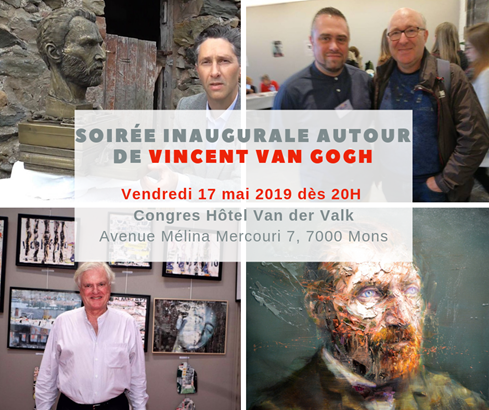
Anthony Padgett, Vincent Vallée, Jean-Louis Brochen and Filip Depuydt
Have the great pleasure topresent
their Vincent Van Gogh inauguration ceremony
On Friday, 17 May 2019 at 20:00
At the Congres Hotel Van der Valk
Avenue Mélina Mercouri 7 - 7000 Mons
English
(voir version française plus bas)
Introduction
Arles, Tuesday, 2 October 1888
My dear friend Boch,
Many thanks for your letter, which gave me great pleasure. I congratulate you on not having hesitated this time — and on having tackled the Borinage. That’s a field in which you’ll be able to work for the whole of your life, the extraordinary landscape as well as the human figure!
Because everything you do will be of extraordinary interest to me, since I so much love that sad region of the Borinage, which will always be unforgettable to me.
If I come to Paris next year, then I’m more or less determined to push on as far as Mons. And perhaps to my own country, to do places there that I knew before. Thus, in the Borinage, Marcasse or St-Antoine at Petit-Wasmes. And then the Cour de l’Agrappe, at your place in Frameries. In short, it was in the Borinage that I began to work from nature for the first time. But I destroyed all that long ago, of course.
But it touches my heart that in the end all these places are going to be painted.
With a solid handshake and strength and lots of success with the work.
b.àv.
Vincent
--------------------------------
Preston, 10 novembre 2017
Dear Mr Depuydt,
I was advised to contact you by Bernadette Murphy, author of "Van Gogh's Ear". I am an award winning sculptor based in the UK (near Manchester). As part of my 2017 project “A Year With Vincent Van Gogh” I’ve created a sculpture of Vincent Van Gogh. Also in the project are contemporary art works and over 60 Post-Impressionist style oil paintings.
Please find attached images of the sculpture which was made after extensive study of Van Gogh’s many self portraits and the various other images of him. There are 3 parts to the sculpture which may be exhibited together or separately.
I hope to find homes for 5 cold-cast finishes of the pieces (brass, bronze, copper, aluminium and slate) in sites associated with Van Gogh and his life, in Holland, Belgium, France, England and internationally in one of the collections or centres of research.
As yours is one such centre I would like to propose that you might consider one of these busts. Alternatively I hope that you might please be able to suggest someone else that I might contact. The condition of the donation is that the work be permanently displayed indoors or outdoors.
I see it as an honour and a privilege to create such a work and look forward to hearing from you soon.
Yours faithfully
Anthony Padgett (MA, PG Dip, PGCE, BA), Preston, Lancashire, UK
Presentation of the project
Frameries, 17 April 2019
In his above letter to Eugène Boch, Vincent Van Gogh expressed his desire to travel back to the Borinage, a region he loved so much. Unfortunately he never got the chance to make this dream. Come thrue.
In 2017 I received the above message from Mr. Anthony Padgett. If it was an honour and a privilege for him to make the sculpture, I found it even a greater honour for me to receive a copy of the bust to be displayed in the Mons-Borinage region and to get involved in his European project.
For about 9 years I have tried to increase the interest for Vincent Van Gogh’s heritage places in our region by organizing guided tours and small events. As interest has been slowly increasing, I decided to make my Van Gogh mission an additional activity, which I called “Borigines”. Receiving a sculpture from a British artist is a nice opportunity to get Vincent in the picture again and to create links with the other cities in England, France and The Netherlands where other copies of the same bust will be installed: London, Ramsgate, Arles, Nuenen… A real European Van Gogh network !
Moreover, from my point of view, accepting Anthony Padgett’s proposal to install his sculpture in the Mons-Borinage region, feels like a sort of symbolic homecoming of Vincent and help him finally make his dream come true.

In order to comply with the condition of the deal as expressed by Anthony Padgette, I had to find the ideal location to display the bust ? I could place it in Van Gogh related places like the Van Gogh Houses in Wasmes and Cuesmes, or in the former Marcasse colliery where Vincent went down in the mine in Spring 1879. But then the sculpture would only be seen by persons who already know about Vincent’s history in the Borinage.
So wy not work the other way round : find a place where the sculpture has a good visibility to be an Ambassador for Vincent Van Gogh and the Borinage !
I found a place where about 1000 tourists and business people pass every day, right outside the city centre of Mons : the Congres Hotel Van der Valk. I would very much like to thank Mr. Mathieu Wohrmann, Manager of the hotel, who agreed to host Anthony’s sculpture in the entrance hall of his hotel. A safe haven where Vincent can be admired by thousands of people and entirely accomplish his role as a cultural and touristic Ambassador for the Mons-Borinage region !
Anthony and myself, fixed a date for him to fly over to Belgium because I did not want to unveil the sculpture without the artist being present. The inauguration ceremony will also be the ideal opportunity to invite and thank all people who got involved and who helped me during my Van Gogh adventures over the past 10 years. Because, even if my activities often look like a “one-man show”, I could not make things concrete without the help and support of several enthusiastic locals but also visitors and journalists from all over the world. Many thanks to all of them !
As it has always been my objective to promote local artists and craftsmen who are working around the Van Gogh theme, I thought it would be a great idea to use the opportunity to combine the inauguration of the sculpture with the presentation of the new novel written by local writer Vincent Vallée from Boussu) entitled Vincent Van Gogh, sa vie dépeinte.
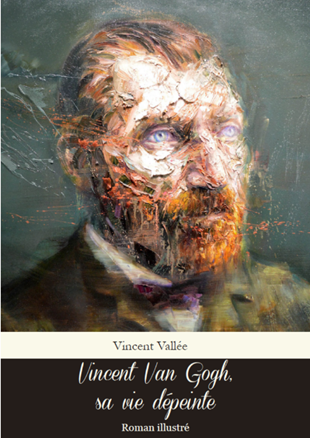
I learned about Vincent’s project via Facebook and asked him if he was ready to join Anthony and myself on May 17th. Vincent immediately agreed so both bust and book will be presented in Mons together.
Last but not least, the event on May 17 will also be the opportunity to present Lille-based poster artist Martin Loume, allias Jean-Louis Brochen, who will display his posters in the Mons Palace of Justice from May 10 to June 8, 2019.

If j’an-Louis’ work has nothing to do with Vincent Van Gogh, there is an indirect link though. Jean -Louis was introduced to me by Bruno Vouters (ex La Voix du Nord newspaper and author of the book “Vincent Van Gogh au fond de la mine”) with whom I’m working on another Van Gogh related project about Vincent’s 1880 journey from Cuesmes to Courrières and back. But all details of this project will be unveiled later. To be continued…
Filip Depuydt
Anthony Padgett's project
A Year With Vincent 2017. Anthony David Padgett. www.ayearwithvincent.co.uk
Original Sculpture, 67 Paintings and Contemporary Art inspired by the art, life and letters of Vincent Van Gogh. Created through 2017 by Anthony David Padgett during a journey that changed his life
A sculpture of Vincent Van Gogh 2017. Based on a detailed analysis of all Van Gogh's self portraits Padgett's award winning sculpture is being sited in places associated with Van Gogh's life. The base incorporates nineteenth century antiques including the same kind of pipe he smoked and the pistol he shot himself with. The books are 1st editions of his letters and the sunflowers are from Arles (France).
67 Oil Paintings. In 2017 Anthony Padgett had a life changing year. He studied the legacy of Van Gogh. Then created 67 oil paintings to parallel and contrast Van Gogh's life with his own. Rather than just copy Van Gogh's style Padgett created a new style- Neo-Post-Impressionism. This work captures his moving year in a n expressive, pixellated "Divisionism" with broad brush strokes and "Cloisionnism" outlines. It was influenced by Van Gogh, Signac, Derain & Seurat.
In 2017 Padgett also produced 5 contemporary sculptures and a piece of performance art related to Van Gogh.

SUPPORTING INFORMATION
After seeing many of Van Gogh’s self-portraits at the Van Gogh museum in 2016, I realised that with such good source material that I should be able to create a bust. I hoped to try and get as close a likeness to him as I could – a task almost impossible due to the varied and contrasting images of him - where key features vary significantly.
As well as his self portraits (painted in Paris, Arles and Saint-Remy) I used photographs of Van Gogh as a youth and paintings of him by his contemporaries (Henri de Toulouse-Lautrec, John Russell, Archibald Hartrick and Horace Livens). I also used family images of his brother Theo (as a younger and older man) and of his Nephew, Vincent to help interpret the self-portraits.
I then went through all these images looking for common aspects amongst the variety of features and proportions of features. For instance, there are many different representations of his nose. It can be long, broad, bent, pointed hooked and large or smaller, narrow, straight and fine. It can be bony or full, and concave or convex. It was factors like this that I needed to accommodate. I amalgamated the images, using a number that seemed closest to him (using measurements of overall head proportions and individual features e.g. eyes, nose, mouth and their relative positioning). And based these on measurements taken of him as a young man.
I flipped the self-portraits in the computer to make them the correct way around (because his self portraits were painted in a mirror). I also used a number of the key images in both ways around (flipped and unflipped) to help create balance and symmetry in the sculpture.
I used a skull and anatomical models to create the sculpture, looking at the bone structure within the images and understanding where the sinews in the muscles within the face were. For instance, Van Gogh tends to be looking to the side because he is painting himself in a mirror and looking to the side. My bust is looking straight forward and that affects how eyeballs sit in the head and the way the muscles sit on the face.
It was tricky to sculpt the beard and hair as these were different lengths in different periods. However, one feature that is always clear is that he had small, intense pupils and very striking rings around his sunflower like irises. Another key feature, but one that isn’t shown fully in his self-portraits, is his ears. I based the ears on photographs of him as a young man, on his self-portraits and also on a profile photograph of his sister Anna Cornelia whose ear is close in features to Vincent’s.
In addition to these differences I had to consider the viewers’ expectations. The portraits that we normally associate Van Gogh with were when he was in the Sanatorium at Saint-Remy, towards the end of his life, and they are not as representative of his look in the rest of his life as an artist. I’ve tried to keep the hair as similar to his Paris period but with an amount of length from the Saint-Remy period. Sometimes the moustache curled up at the sides and sometimes down. Sometimes it is over the mouth and other times clear of the upper lip. So I’ve combined these features.
I didn’t put any collars or clothes on the bust as it would define the period quite specifically and I wanted it to cover all his time as an artist. I wanted to capture some of the energy and life in Van Gogh’s painting. Some of the marks in the clay I’ve tried to make like his brushwork in his Paris period. I’ve made it in a traditional 19th century style of bust to fit with the era he was from.
Whilst the work I’ve created is inevitably not a perfect representation I have tried to capture the essence of Vincent Van Gogh as I see him and have experienced through researching him and analysing the many images of him.
As well as the main bust I have also created 2 bases. The bust and bases can be assembled together or displayed as 3 separate sculptures.
Items in the bases of the sculpture are a display of Van Gogh’s life. It includes his published letters, paints, pipe, razor and revolver. These are cast direct from genuine 19th century antiques (and I still have these original items). These include the same pipe as used in his 1888 chair painting (the importance of this find cannot be over-exaggerated as it was an item Van Gogh used to represent himself with). This pipe belonged to Parisian artist Noel Saunier who was represented by Goupil & Cie in their 1887 catalogue of De L’Ecole Moderne. Vincent had worked for Goupil & Cie and his brother Theo Van Gogh worked for them in Paris through-out the 1880s selling work from the Modern School.
Also included is a late 19th century “Lefaucheux” style 7mm pinfire revolver (such as was exhibited at the Van Gogh Museum in 2016) that he may have been shot with (by himself or other). Other items include a 19th century cut-throat razor, paints, brushes, palette and paint box.
The other base is the earliest published books (from 1906 – 1914) of Van Gogh’s letters are included along with 2 sunflowers that I picked in Arles in 2017. The level of casting detail is amazing, with even the lettering on the book covers coming out.
The books are;
• “Letters of a Post-Impressionist” 1911 translated by Anthony M.
• “Briefe” 1906 edited by Margarete Mauthner.Ludovici.
• “Lettres de Vincent Van Gogh a Emile Bernard” 1911.
• “Brieven aan zijn brooder” 1914 edited by Jo Van Gogh –Bonger.
As mentioned, also in the “A Year With Vincent Van Gogh” project are contemporary art works and over 60 oil paintings. These are in my own development on the style of Van Gogh, combining his Post Impressionist style with modern expressionism and traditional Chinese Painting techniques. Thus the works are not a mere copying of his style but the creation of a new style. The works are from my own perspective as a 21st century artist in the living in a semi-rural area, re-envisaging many of Van Gogh’s works. The intention is to exhibit the paintings and sculptures and publish images of them in a book. As part of this year I have made research visits to Amsterdam, Arles and Saint Remy.
Biographies
Anthony Padgett

Anthony Padgett is a writer and artist with an MA in the Theory of Contemporary Art from Wimbledon School of Art. His art has featured in the national and international press.
Anthony has published 10 books on art, religion and spirituality. And a number of fictional works.
1990 to 1997. Anthony studied Philosophy and taught Religious Education. He worked as an archaeological stone conservator in London and for the British School of Archaeology in Jerusalem, the Israeli Antiquities Authority and the Palestinian Departments of Antiquities.
1998 to 2018. He organized a large number of exhibitions in London, won first prize in an International Art and Technology award 2002 and was a finalist in the International Jewish Artist of the Year Awards 2004. He has given talks at the Studio Art School in New York, the Institute of Contemporary Art in London and at Tate Modern.
His public sculptures are sited at Espace Van Gogh in Arles (France), Van Gogh Walk in Brixton, Welwyn, Morecambe Bay, Leighton Hall Eccleston Square (London), Oxford University, New York Public Library, Scarborough Art Gallery, Edinburgh War Poet's Collection, Bradford Library and Ripon Cathedral.
In 2017 he began a year of creating work influenced by the life and work of Vincent Van Gogh. www.ayearwithvincent.co.uk Anthony painted 68 oil paintings exploring Van Gogh’s life and his bust of Vincent won an award for Exceptional Quality at the Harris Museum and Art Gallery in Preston. 7 copies in different finishes are sited in places associated with Van Gogh’s life. A book of Anthony’s work is “A Year With Vincent” and is available on www.amazon.co.uk
Anthony is currently working on www.ayearwithpicasso.co.uk
Vincent Vallée
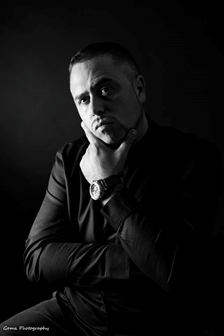
Vincent Vallée is a Belgian author, father of two sons. He is a workman. His passion for words has animated him since his childhood. Reading and writing have become essential to his daily life.
Vincent is the author of two novels:
Les écrits parleront, Marius, l’enfant galibot, Verlaine avoue Rimbaud.
He also wrote three short stories:
L’homme du bo, Frères de sang et Le grand voyage.
Vincent had the honor of appearing among the selection of the Mon's Livre 2018 literary prize, for his novel Verlaine avoue Rimbaud.
Like an archaeologist of souls, Vincent Vallée went to find another truth with Vincent Van Gogh, sa vie dépeinte (his life depicted), which he relates in a novel of more than 350 pages. With on the cover, a work of the great Canadian painter Mathieu Laca, representing Vincent Van Gogh in all its brutality.
The summary :
Vincent Van Gogh, the other one, the one we have not seen, not believed, not understood. Around him a few people, all benevolent?
Who was he ? Was he the madman we are told ?
He had a brutal, epistolary, romantic life. Rejected by all, including himself. Vincent Van Gogh is also the eternal child, the naive, the generous who feeds the mice instead of feeding and who was ecstatic in front of a storm, soaked to the bones. Van Gogh could also become this volcano that swells, snores, erupts. Pushed to the edge of the abyss, that of unreason, of self-contempt, he found himself immersed in the sorrow and despair of finding nowhere to go, nowhere where he would be loved, understood. He who, during his life, will look for a nest where to rest, will end his days in a small village near Paris, a suicide ?
Vincent Van Gogh especially is this painter, this artist who painted what he felt, not what he saw. He liked to paint what the others were turning away from, a hardworking man, a twisted and lonely almond tree, himself ... We all know VINCENT VAN GOGH!
Are you really sure?
Jean-Louis Brochen
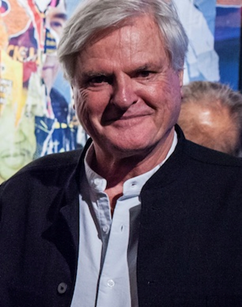
The lacerations and collages of Martin Loume, alias Jean Louis Brochen, are made from posters he ripped off city walls crossed at random for over twenty years during his journeys. They are a kind of urban ethnology, pushing us to find the sense of history, the taste of life, and keep the flame.
Such messages in several aesthetic, political, poetic dimensions are part of the "New Realist" tradition... This abounding list, also expresses the rejection of injustice and thirst for a world delivered from its faults.
Martin Loume remains alert, lucid but resolute, receptive and creative. The real continues to inspire and motivate him. His steps are not lost.
After all he displays a prolonged youth, an ability to look up and raise arms, to leave again and again to the walls from which one word can be written : freedom.
Filip Depuydt
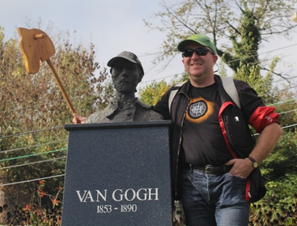
Filip Depuydt works as a guide and receptionist at the , UNESCO World Heritage Site du Grand-Hornu. Thanks to his many contacts with tourists and journalists, Filip became aware of the importance of places where Vincent Van Gogh passed, in the Netherlands and in France. He develops activities to draw the attention of local decision-makers to the potential of Van Gogh places in the Borinage. Also, by his voluntary commitment as an Ambassador for "Mons2015" (European Capital of Culture) and as a Greeter for the city of Mons and its region, he is now considered to be the specialist of the Van Gogh Boraine period. . He is convinced that the Van Gogh theme can trigger a positive spiral for tourism development in the Mons-Borinage region.
As a complementary activity, Filip created HIS BORIGINES agency to promote the Borinage, its industrial and Vincent Van Gogh related heritage through guided walks and cultural events.
Additional info
Anthony Padgett – ‘A year with Vincent Van Gogh” : anthonydpadgett.tripod.com/vincentindex.html
Martin Loume : martinloume.blogspot.com/
Vincent Vallée : www.facebook.com/Vallee.Auteur/
Filip Depuydt – Borigines : vangoghborinage.canalblog.com
Français
Introduction
Arles, mardi 2 octobre 1888
Mon cher ami Boch,
Merci bien de votre lettre qui m’a fait bien plaisir. Je vous en félicite de ne pas avoir hésité cette fois-ci et d’avoir attaqué le Borinage. Voilà un champ où vous pourrez travailler votre vie durant tant le paysage extraordinaire que la figure.
Car tout ce que vous ferez va m’intéresser extraordinairement puisque j’aime tellement ce triste pays du Borinage qui toujours me sera inoubliable.
Si je viens à Paris l’année prochaine alors je suis à peu près décidé de pousser jusqu’à Mons. Et peut-être jusqu’à mon pays pour y prendre des endroits connus d’avance. Ainsi dans le Borinage Marcasse ou St-Antoine au Petit-Wasmes. Et puis la cour de l’Agrappe chez vous à Frameries. C’est en somme dans le Borinage que j’ai pour la première fois commencé à travailler sur nature. Mais naturellement tout cela je l’ai depuis longtemps détruit.
Mais cela me remue le cœur qu’enfin tous ces endroits vont être peints.
Bonne poignée de main et bon courage et bien du succès pour le travail.
t. à v.
Vincent
-------------------------------
Preston, 10 novembre 2017
Dear Mr Depuydt,
I was advised to contact you by Bernadette Murphy, author of "Van Gogh's Ear". I am an award winning sculptor based in the UK (near Manchester). As part of my 2017 project “A Year With Vincent Van Gogh” I’ve created a sculpture of Vincent Van Gogh. Also in the project are contemporary art works and over 60 Post-Impressionist style oil paintings.
Please find attached images of the sculpture which was made after extensive study of Van Gogh’s many self portraits and the various other images of him. There are 3 parts to the sculpture which may be exhibited together or separately.
I hope to find homes for 5 cold-cast finishes of the pieces (brass, bronze, copper, aluminium and slate) in sites associated with Van Gogh and his life, in Holland, Belgium, France, England and internationally in one of the collections or centres of research.
As yours is one such centre I would like to propose that you might consider one of these busts. Alternatively I hope that you might please be able to suggest someone else that I might contact. The condition of the donation is that the work be permanently displayed indoors or outdoors.
I see it as an honour and a privilege to create such a work and look forward to hearing from you soon.
Yours faithfully
Anthony Padgett (MA, PG Dip, PGCE, BA), Preston, Lancashire, UK
Présentation du projet
Frameries, le 17 avril 2019
Dans sa lettre à Eugène Boch, Vincent Van Gogh exprime son désir de retourner dans le Borinage, une région qu’il aimait tant. Malheureusement, il n'a jamais eu l’occasion de réaliser ce rêve.
En 2017, j'ai reçu le message ci-dessus de M. Anthony Padgett.
Si c’était un honneur et un privilège pour lui de réaliser la sculpture, le fait de recevoir un exemplaire du buste et d’intégrer son projet européen était tout autant un honneur pour moi.
Depuis environ 9 ans, j’essaie de faire connaître les lieux patrimoniaux de Vincent Van Gogh dans notre région en organisant des visites guidées et de petits événements. L'intérêt augmentant lentement, j'ai décidé de faire de ma mission Van Gogh une activité complémentaire, que j'ai appelée « Borigines».
Recevoir une sculpture d'un artiste britannique est une bonne occasion de remettre Vincent à l’avant-plan et de créer des liens avec d'autres villes d'Angleterre, de France et des Pays-Bas où d'autres copies du même buste seront installées :
Londres, Ramsgate, Arles, Nuenen… Un véritable réseau européen Van Gogh !
En outre, de mon point de vue, accepter la proposition d’Anthony Padgett d’installer sa sculpture dans la région de Mons-Borinage est un retour au pays symbolique pour Vincent. Son rêve sera enfin réalisé !

Afin de respecter les conditions de l’accord telles qu'exprimées par Anthony Padgett, je devais trouver l'emplacement idéal pour exposer le buste ! J’aurais pu le placer dans des endroits liés à Van Gogh, tels que les maisons Van Gogh à Wasmes et Cuesmes, ou dans l'ancien charbonnage de Marcasse, où Vincent est descendu dans la mine au printemps 1879. Mais la sculpture ne serait alors vue que par des personnes qui sont déjà au courant de l'histoire de Vincent dans le Borinage.
Alors, pourquoi ne pas s’y prendre autrement :
Trouver un endroit où la sculpture aura une assez bonne visibilité pour jouer le rôle d’ambassadeur de Vincent Van Gogh dans notre Borinage.
J'ai trouvé un lieu qui répond à ces critères juste en dehors du centre-ville de Mons, et où passent quotidiennement environ 1000 touristes et hommes d’affaires :
Le Congres Hôtel Van der Valk. Je tiens à remercier vivement M. Mathieu Wohrmann, directeur de l’hôtel, qui a accepté d’héberger la sculpture d’Anthony dans le hall d’entrée de son hôtel.
Un refuge où Vincent pourra être admiré par des milliers de personnes et remplir pleinement son rôle d'ambassadeur culturel et touristique de la région de Mons-Borinage !
Anthony et moi-même avons fixé une date pour qu'il vienne en Belgique, car je ne voulais pas dévoiler la sculpture sans la présence de l'artiste. La cérémonie d'inauguration sera pour moi également l'occasion par excellence d'inviter et de remercier toutes les personnes qui se sont impliquées dans mes projets et qui m'ont aidé lors de mes aventures avec Van Gogh au cours des 10 dernières années. Car, même si mes activités ressemblent souvent à un «one-man show », je ne pourrais pas concrétiser les choses sans l'aide et le soutien de plusieurs locaux enthousiastes, mais aussi de visiteurs et de journalistes du monde entier. Un grand merci à tous !

Mon objectif ayant toujours été de promouvoir les artistes et artisans locaux travaillant autour du thème Van Gogh, j’ai pensé que ce serait une excellente idée de saisir cette occasion pour combiner l’inauguration de la sculpture à la présentation du nouveau roman écrit par l'écrivain local Vincent Vallée de Boussu intitulé « Vincent Van Gogh, sa vie dépeinte ».
J'ai entendu parler du projet de Vincent sur Facebook et lui ai demandé s’il était prêt à rejoindre Anthony et moi-même le 17 mai. Vincent a immédiatement accepté. Le buste et le livre seront donc présentés côte à côte à Mons.

Enfin, l'événement du 17 mai sera également l'occasion de présenter l’artiste lillois, Martin Loume, allias Jean-Louis Brochen, qui exposera ses affiches au Palais de justice de Mons du 10 mai au 8 juin 2019.
Si le travail de Jean-Louis n’a, à priori, rien à voir avec Vincent Van Gogh, il existe quand-même un lien indirect. Jean-Louis m'a été présenté par Bruno Vouters (ex-rédacteur en chef à La Voix du Nord et auteur du livre « Vincent Van Gogh au fond de la mine») avec qui je travaille sur un autre projet lié à Van Gogh sur le voyage de Vincent, de Cuesmes à Courrières et retour en 1880. Mais les détails de ce projet seront dévoilés plus tard. À suivre…
Filip Depuydt
Le projet d'Anthony Padgett
Une année avec Vincent 2017. Anthony David Padgett. www.ayearwithvincent.co.uk

Sculpture originale, 67 peintures et art contemporain inspirés par l'art, la vie et les lettres de Vincent Van Gogh. Créé en 2017 par Anthony David Padgett lors d'un voyage qui a changé sa vie
Une sculpture de Vincent Van Gogh 2017. Basée sur une analyse détaillée de tous les autoportraits de Van Gogh, la sculpture primée de Padgett est exposée dans des lieux associés à la vie de Van Gogh. La base contient des antiquités du XIXe siècle, y compris le même type de pipe qu’il a fumé et le pistolet avec lequel il s’est tiré dessus. Les livres sont des premières éditions de ses lettres et les tournesols sont d’Arles (France).
67 peintures à l'huile. En 2017, Anthony Padgett a eu une année qui a changé sa vie. Il a étudié l'héritage de Van Gogh. Puis 67 peintures à l'huile ont été créées pour mettre en parallèle la vie de Van Gogh et la mettre en contraste avec la sienne. Plutôt que de simplement copier le style de Van Gogh, Padgett créa un nouveau style : le néo-post-impressionnisme. Ce travail rend compte de son année émouvante dans un "divisionnisme" pixellisé et expressif avec de larges coups de pinceau et des contours de "cloisonnisme". Il a été influencé par Van Gogh, Signac, Derain & Seurat.
En 2017, Padgett a également produit 5 sculptures contemporaines et une performance liée à Van Gogh.
EXPLICATIONS DU PROJET
Après m’être rendu au musée Van Gogh en 2016, je me suis rendu compte que les autoportraits de l’artiste pourraient être d’excellentes ressources pour me permettre de créer un buste. J'espérais pouvoir me rapprocher le plus possible de la réalité - une tâche presque impossible en raison de la diversité et du contraste entre les différents portraits, où les caractéristiques clés varient considérablement.
Outre ses autoportraits (peints à Paris, Arles et Saint-Remy), j'ai utilisé des photographies de Van Gogh dans sa jeunesse et des portraits de lui peints par ses contemporains (Henri de Toulouse-Lautrec, John Russell, Archibald Hartrick et Horace Livens). Pour m’aider à l'interprétation des autoportraits, j'ai également utilisé des photos de famille de son frère Theo (en tant que jeune homme et en étant plus âgé) et de son neveu Vincent.
J'ai ensuite analysé toutes ces images à la recherche d'aspects communs parmi la variété des caractéristiques et les proportions de ces caractéristiques. Par exemple, il existe des représentations différentes de son nez. Il peut être long, large, courbé, pointu en crochet, grand ou plus petit, étroit, droit et fin. Il peut être osseux ou plein, concave ou convexe. Ce sont des facteurs de ce type que je devais prendre en compte. J'ai fusionné les images, en utilisant celles qui semblaient les plus proches de la réalité (en utilisant les mesures globales des proportions de la tête et des caractéristiques individuelles, par exemple les yeux, le nez, la bouche et leur positionnement relatif). J’ai basé ces éléments sur des mesures prises de lui en tant que jeune homme.
J'ai ensuite inversé les autoportraits à l’aide d’un logiciel pour les orienter correctement (car Vincent peignait ses autoportraits devant un miroir). Afin de créer un équilibre et une symétrie dans la sculpture, j'ai également utilisé un certain nombre d'images clés dans les deux sens (inversé et non inversé).
J'ai utilisé un crâne et des modèles anatomiques pour créer la sculpture, en regardant la structure de l'os représenté dans les images et en étudiant exactement où se trouvaient les tendons des muscles du visage. Par exemple, Van Gogh a tendance à regarder de côté parce qu'il se peint dans un miroir et regarde de côté. Mon buste regarde droit vers l'avant et cela affecte la manière dont les globes oculaires s'assoient dans la tête et la façon dont les muscles s'assoient sur le visage.
Il était difficile de sculpter la barbe et les cheveux, car ils avaient des longueurs différentes selon les époques. Cependant, une caractéristique permanente est celle des pupilles petites et intenses et des anneaux très marqués autour de ses iris qui ressemblent fort à ses tournesols. Une autre caractéristique clé, mais qui ne figure pas pleinement dans ses autoportraits, est son oreille. J'ai basé le travail des oreilles sur des photographies de lui dans sa jeunesse, sur ses autoportraits et également sur une photo de profil de sa sœur Anna Cornelia, dont les oreilles sont proches de celles de Vincent.
En plus de ces différences, je devais tenir compte des attentes des spectateurs. Les portraits auxquels nous associons normalement Van Gogh datent de la fin de sa vie au Sanatorium de Saint-Rémy, et ils ne sont pas aussi représentatifs de son regard envers lui-même dans le reste de sa vie en tant qu’artiste. J’ai essayé de garder les cheveux semblables à ceux de sa période parisienne, mais avec une longueur représentative de la période à Saint-Rémy. Parfois, la moustache s'enroulait sur les côtés et parfois elle pendait vers le bas. Dans certains cas, elle couvre la bouche et d'autres fois elle est limitée aux commissures des lèvres (moustache américaine). J'ai donc combiné toutes ces caractéristiques.
Mon objectif était de créer un buste représentatif de toute la période artistique de Van Gogh. C’est la raison pour laquelle je ne l’ai pas pourvu de collier ni de vêtements ; cela l’aurait lié à une période trop précise. Je voulais capter une partie de l’énergie et de la vie dégagées par la peinture de Van Gogh. J’ai essayé de faire ressembler certaines marques d’argile à son trait de pinceau à l’époque parisienne. Pour être fidèle à son époque, je l’ai confectionnée dans le style traditionnel des bustes du XIXe siècle.
Bien que le travail que j’ai créé n’est inévitablement pas une représentation parfaite, j’ai essayé de saisir l’essence de Vincent Van Gogh tel que je le conçois. J’ai fait cette expérience en effectuant des recherches sur l’homme et en analysant ses nombreuses images.
En plus du buste principal, j'ai également créé 2 bases. Le buste et les bases peuvent être assemblés ou présentés sous forme de 3 sculptures distinctes.
Les éléments représentés dans les bases de la sculpture illustrent la vie de Van Gogh. Ils comprennent ses lettres publiées, ses peintures, sa pipe, son rasoir et son revolver. Tous ces objets sont des moulages d’antiquités authentiques d’origine du 19ème siècle (qui sont toujours en ma possession). Ils incluent la même pipe que celle utilisée dans la peinture de sa chaise de 1888 (l’importance de cette découverte ne saurait être exagérée, car c’était un objet que Van Gogh utilisait volontairement pour se représenter). Cette pipe appartenait à l’artiste parisien Noël Saunier, représenté en 1887 par Goupil & Cie dans leur catalogue de L’École Moderne. Vincent avait travaillé pour Goupil & Cie, et son frère Theo Van Gogh a travaillé pour la même société à Paris pendant les années 1880, vendant des œuvres de l’Ecole Moderne.
Également représenté : un revolver à broche de 7 mm de style "Lefaucheux" de la fin du XIXe siècle (tel qu’exposé au musée Van Gogh en 2016) avec lequel il a probablement été abattu (soit par lui-même ou par quelqu’un d’autre). D'autres articles incluent un rasoir du XIXe siècle, des peintures, des pinceaux, une palette et un pot de peinture.
L'autre base est constituée des premiers livres publiés des lettres de Van Gogh (de 1906 à 1914), ainsi que de 2 tournesols cueillis à Arles en 2017. Les détails des moulages sont incroyablement précis. Même les lettres ressortent des couvertures des livres...
Les livres représentés sont les suivants :
• “Letters of a Post-Impressionist” 1911 traduit par Anthony M.
• “Briefe” 1906 édité par Margarete Mauthner.Ludovici.
• “Lettres de Vincent Van Gogh a Emile Bernard”, 1911.
• « Brieven aan zijn brooder», 1914, publié par Jo Van Gogh –Bonger.
Comme déjà mentionné, le projet « Une année avec Vincent Van Gogh » comprend également des œuvres d'art contemporain et plus de 60 peintures à l'huile. Celles-ci ont été élaborées dans un style propre à moi inspiré sur Van Gogh, combinant son style postimpressionniste avec l'expressionnisme moderne et les techniques de peinture traditionnelle chinoise. Ainsi, les œuvres ne sont pas une simple copie de son style mais le fruit de la création d’un nouveau style. C’est mon point de vue personnel en tant qu’artiste du XXIe siècle vivant dans une région semi-rurale, qui réinterprètent de nombreuses œuvres de Van Gogh. L'intention est d'exposer les peintures et sculptures et de publier ses reproductions dans un livre. Dans le cadre de cette année consacrée à Van Gogh, j'ai effectué des visites de recherche à Amsterdam, Arles et Saint-Rémy.
Biographies
Anthony Padgett

Anthony Padgett est écrivain et artiste, titulaire d'une maîtrise en théorie de l'art contemporain de la Wimbledon School of Art. Son art a figuré dans la presse nationale et internationale. Anthony a publié 10 livres sur l'art, la religion et la spiritualité. Et un certain nombre d'œuvres de fiction.
1990 à 1997. Anthony étudie la philosophie et enseigne l’éducation religieuse. Il a travaillé comme conservateur de pierre archéologique à Londres et pour la British School of Archaeology de Jérusalem, l'Autorité des antiquités israéliennes et les départements palestiniens des antiquités.
De 1998 à 2018. Il a organisé un grand nombre d'expositions à Londres, a remporté le premier prix d'un concours international d'art et de technologie en 2002 et a été finaliste au prix international de l'artiste juif de l'année 2004. Il a donné des conférences au Studio Art School de New York, l’Institute of Contemporary Art de Londres et de la Tate Modern.
Ses sculptures publiques sont situées à l'Espace Van Gogh à Arles (France), à la promenade Van Gogh à Brixton, à Welwyn, à Morecambe Bay, à Leighton Hall Eccleston Square (à Londres), à l'Université d'Oxford, à la Bibliothèque d'art de Scarborough, à la Scarborough Art Gallery, à la Collection Edinburgh War Poet , La bibliothèque de Bradford et la cathédrale Ripon.
En 2017, il entame une année de création artistique influencée par la vie et l'œuvre de Vincent Van Gogh. www.ayearwithvincent.co.uk Anthony a peint 68 peintures à l'huile explorant la vie de Van Gogh et son buste de Vincent a remporté un prix de qualité exceptionnelle au Harris Museum and Art Gallery de Preston. 7 exemplaires de différentes finitions sont situés dans des lieux associés à la vie de Van Gogh. Le livre d’Anthony intitulé «Une année avec Vincent» est disponible sur www.amazon.co.uk
Actuellement Anthony travaille sur www.ayearwithpicasso.co.uk
Vincent Vallée

Vincent Vallée est un auteur belge, père de deux garçons. Il est ouvrier. Sa passion pour les mots l’anime depuis sa plus tendre enfance. La lecture et l’écriture sont devenues essentielles à son quotidien.
Vincent est l’auteur de trois romans :
Les écrits parleront, Marius, l’enfant galibot,Verlaine avoue Rimbaud.
Il a aussi écrit trois nouvelles :
L’homme du bo, Frères de sang et Le grand voyage.
Vincent Vallée a eu l’honneur de figurer parmi la sélection du prix littéraire Mon’s Livre 2018, pour son roman Verlaine avoue Rimbaud.
Vincent Vallée, tel un archéologue des âmes, est allé chercher une autre vérité avec Vincent Van Gogh, sa vie dépeinte et nous l’expose dans un roman de plus de 350 pages. Avec en couverture, une œuvre du grand peintre canadien Mathieu Laca, représentant Vincent Van Gogh dans toute sa brutalité.
Le résumé :
Vincent Van Gogh, l’autre, celui qu’on n’a pas vu, pas cru, pas compris. Autour de lui quelques personnes, toutes bienveillantes ?
Qui était-il ? Était-il ce fou qu’on nous décrit ?
Il eut une vie brutale, épistolaire, romanesque. Rejeté par tous, y compris par lui-même. Vincent Van Gogh c’est aussi l’éternel enfant, le naïf, le généreux qui nourrissait les souris au lieu de s’alimenter et qui s’extasiait devant un orage, trempé jusqu’aux os. Van Gogh pouvait aussi devenir ce volcan qui gonfle, ronfle, entre en éruption. Poussé au bord du gouffre, celui de la déraison, du mépris de soi, il s’est retrouvé immergé dans le chagrin et le désespoir de ne trouver nulle part où aller, nulle part où il serait aimé, compris. Lui qui, sa vie durant, cherchera un nid où se reposer, terminera ses jours dans une petite bourgade près de Paris, un suicide ?
Vincent Van Gogh, c’est surtout ce peintre, cet artiste qui peignait ce qu’il ressentait, non pas que ce qu’il voyait. Il aimait peindre ce dont les autres se détournaient, un ouvrier en plein labeur, un amandier tordu et esseulé, lui-même… Nous connaissons toutes et tous VINCENT VAN GOGH !
En êtes-vous sûr ?
Jean-Louis Brochen

Les lacérations et les collages de Martin Loume, AKA Jean Louis Brochen, réalisées à partir des affiches arrachées, depuis plus de vingt ans, sur les murs des villes traversées au hasard de ses voyages, sorte d’ethnologie urbaine, nous poussent à retrouver le sens de l’histoire, le goût de la vie, et à garder la flamme.
Ce sont dans la tradition des « Nouveaux Réalistes », des messages à plusieurs dimensions esthétiques, politiques, poétiques... Cette liste foisonnante, exprime aussi le refus de l’injustice et à la soif d’un monde délivré de ses fautes.
Martin Loume, lui, reste aux aguets, lucide mais résolu, réceptif et créatif. Le réel ne cesse de l’inspirer et de le motiver. Ses pas ne sont pas perdus.
Ce qu’il affiche, dans le fond, c’est une jeunesse prolongée, une aptitude à lever les yeux et à lever les bras, à repartir sans cesse vers les murs d’où peut s’écrire ce mot, liberté.
Filip Depuydt

Filip Depuydt travaille comme guide et agent d’accueil sur le site du Grand-Hornu, classé patrimoine mondial par l'UNESCO. Grâce à ses nombreux contacts avec les touristes et les journalistes, Filip a pris conscience de l'importance des lieux où Vincent Van Gogh es passé, aux Pays-Bas et en France. Il développe des activités pour attirer l'attention des décideurs locaux sur le potentiel des lieux Van Gogh au Borinage. Aussi, par son engagement volontaire à titre d'Ambassadeur "Mons2015" (Capitale européenne de la Culture) et comme Greeter pour la ville de Mons et sa région, il est aujourd'hui considéré comme étant le spécialiste de la période boraine de Van Gogh. Il est convaincu que le thème Van Gogh peut être le déclencheur d'une spirale positive pour un développement touristique de la région de Mons-Borinage.
A titre d’activité complémentaire, Filip a créé l’agence BORIGINES par laquelle il veut promouvoir le Borinage, son patrimoine industriel et celui lié à Vincent Van Gogh à travers des promenades guidées et des événements culturels.
Infos complémentaires
Anthony Padgett “A year with Vincent Van Gogh” : anthonydpadgett.tripod.com/vincentindex.html
Martin Loume : martinloume.blogspot.com/
Vincent Vallée : www.facebook.com/Vallee.Auteur/
Filip Depuydt – Borigines : vangoghborinage.canalblog.com
Avec les remerciements à / with special thanks to :

Logo dessiné par Mme. Ruth Robson-King
Yorkshire, Angleterre
Filip Depuydt
Frameries
Belgium / Belgique
+32-(0)487-68 58 59
vangoghborinage.canalblog.com
inspired by the art, life and letters of Vincent Van Gogh.
Created through 2017 by Anthony David Padgett. See the journey that changed his life.
Discover Anthony's complete project on : http://anthonydpadgett.tripod.com/vincentindex.html
The Vincent Van Gogh sculpture :
https://www.flickr.com/photos/162575018@N08/albums/72157669072719799
Pinterest :
https://www.pinterest.co.uk/anthonydavidpadgett/

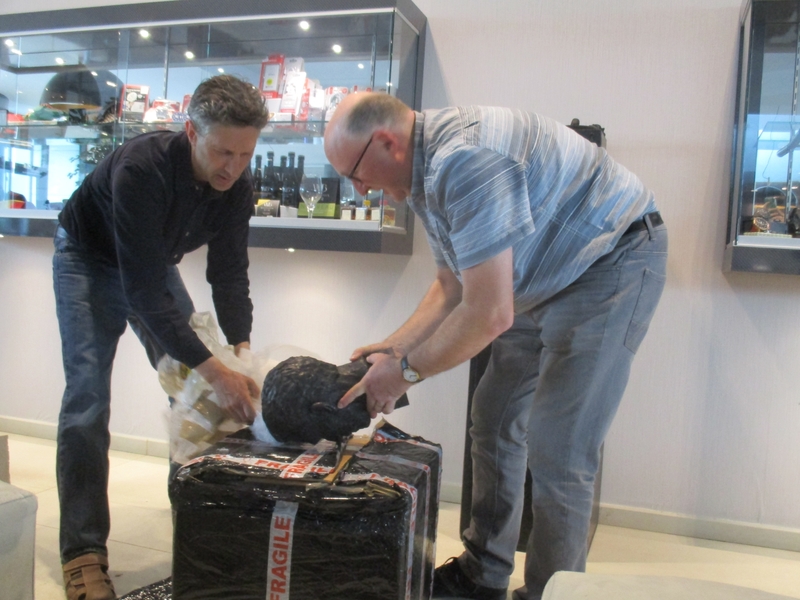

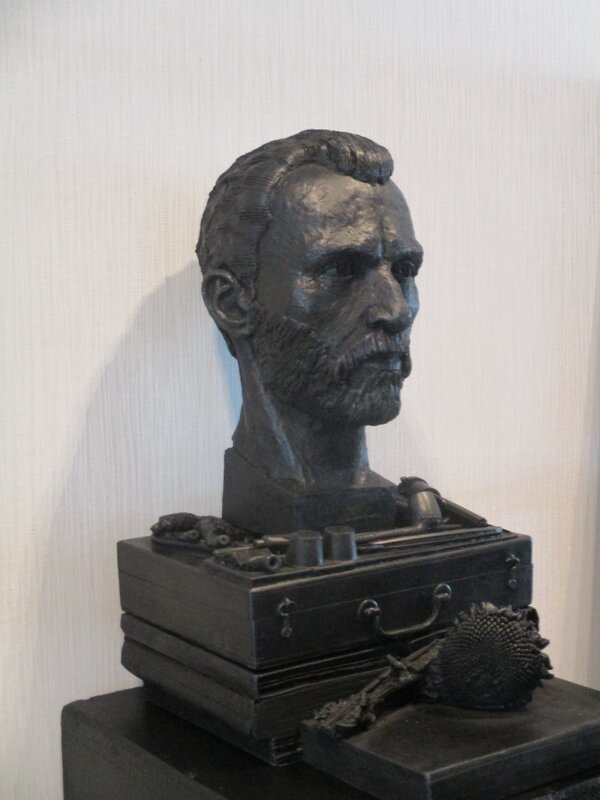
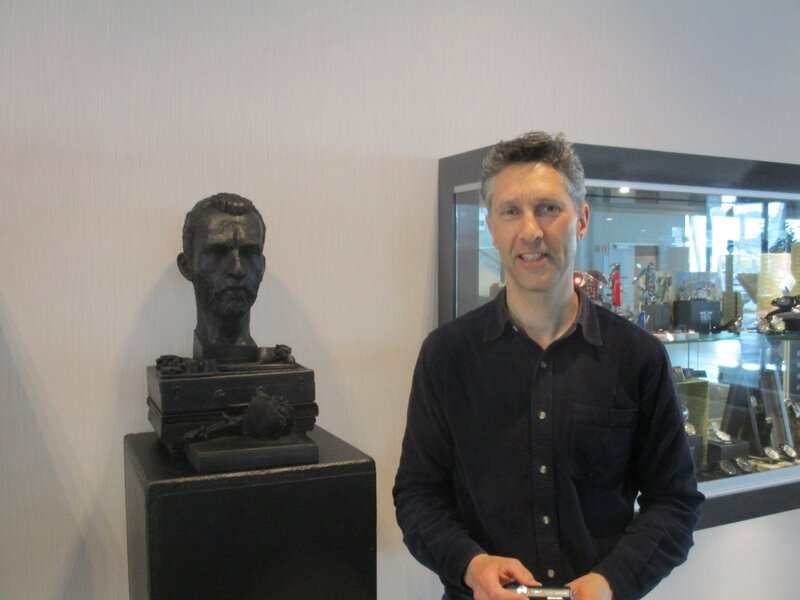
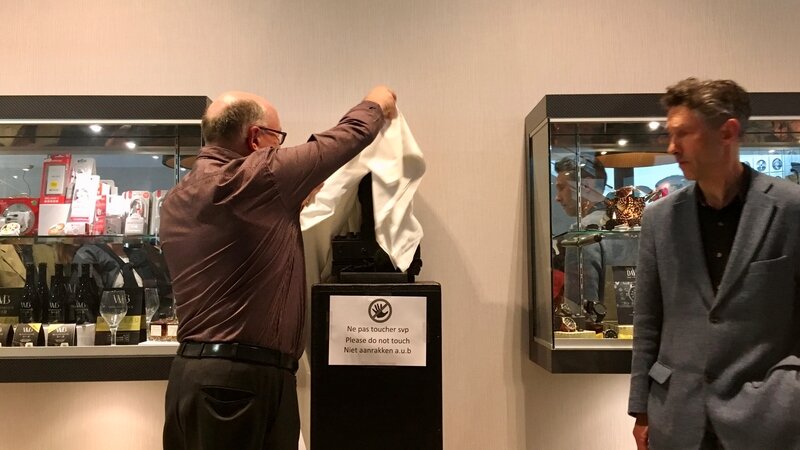
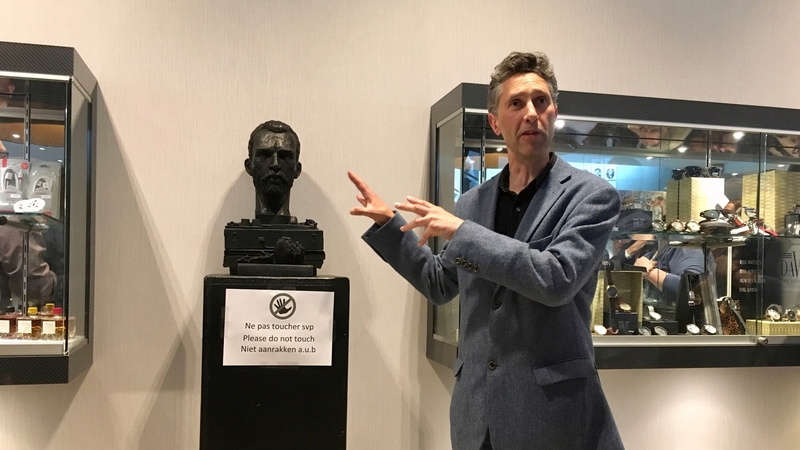


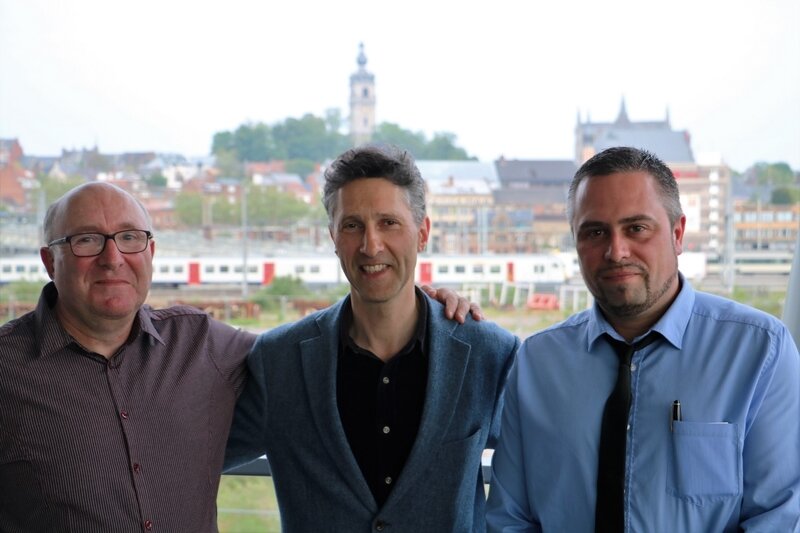

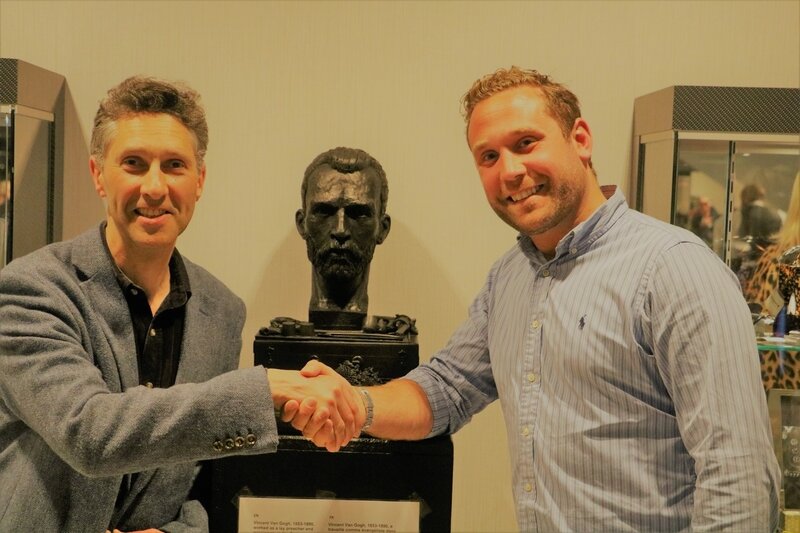
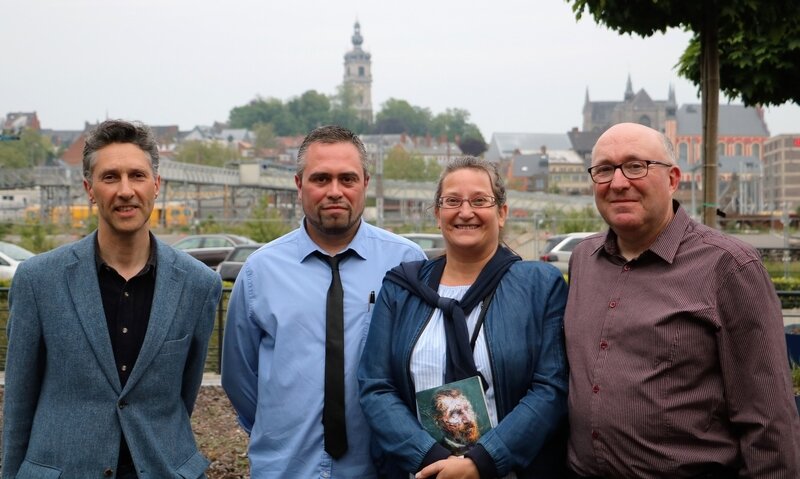
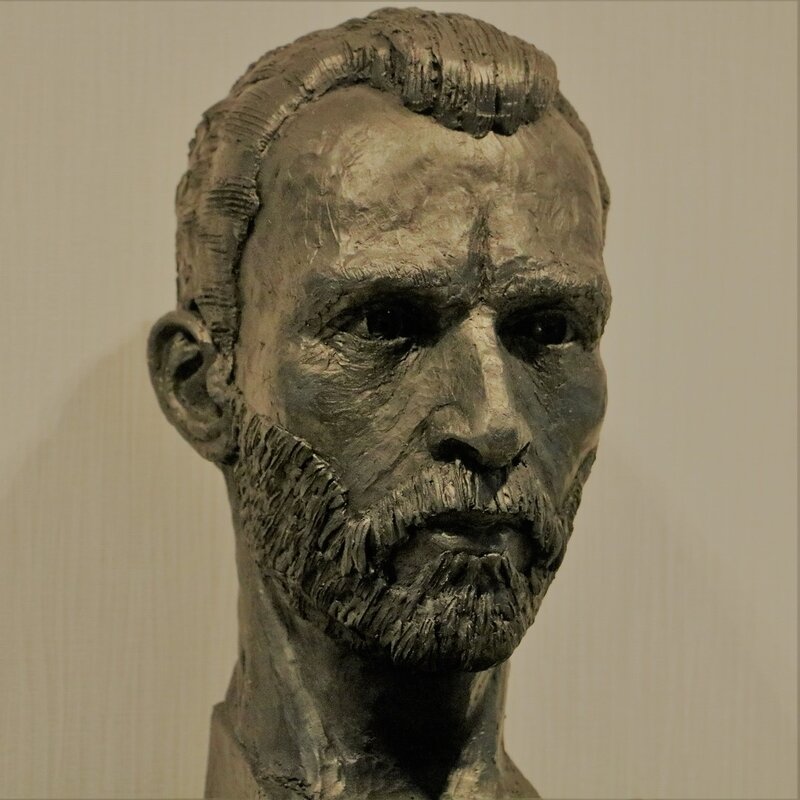

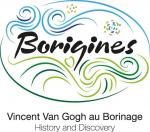
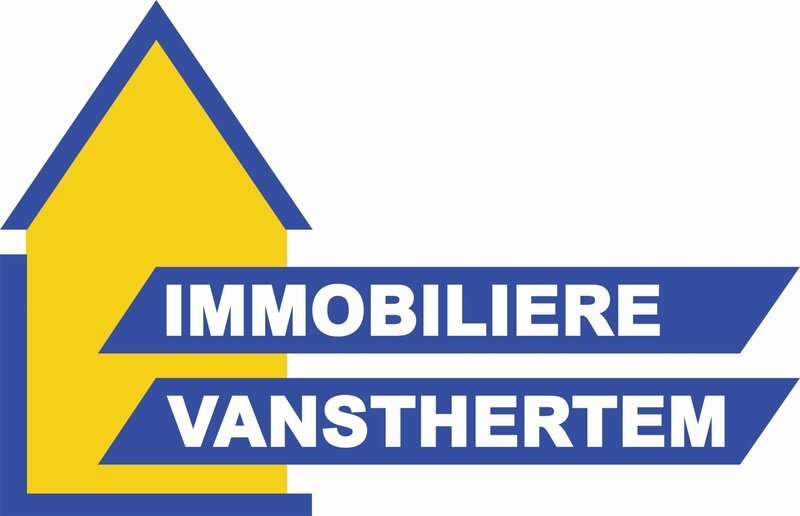
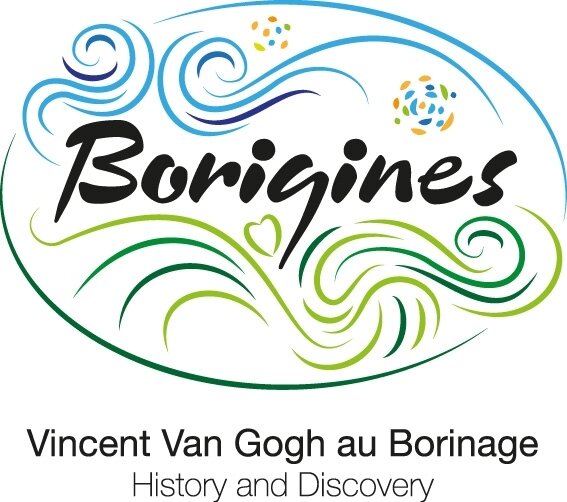



/http%3A%2F%2Fstorage.canalblog.com%2F29%2F67%2F809407%2F123699571_o.jpg)
/http%3A%2F%2Fstorage.canalblog.com%2F40%2F19%2F809407%2F134400871_o.jpg)
/http%3A%2F%2Fstorage.canalblog.com%2F78%2F34%2F809407%2F78449881_o.jpg)
/http%3A%2F%2Fstorage.canalblog.com%2F23%2F57%2F809407%2F134145725_o.jpg)
/image%2F1060022%2F20240415%2Fob_cbcb54_img-2283.JPG)
/https%3A%2F%2Fstorage.canalblog.com%2F28%2F34%2F809407%2F134428987_o.jpg)
/https%3A%2F%2Fstorage.canalblog.com%2F48%2F01%2F809407%2F134428924_o.jpg)
/https%3A%2F%2Fstorage.canalblog.com%2F37%2F44%2F809407%2F133837997_o.jpg)
/https%3A%2F%2Fstorage.canalblog.com%2F50%2F95%2F809407%2F133542135_o.jpg)
/https%3A%2F%2Fprofilepics.canalblog.com%2Fprofilepics%2F6%2F9%2F699405.jpg)